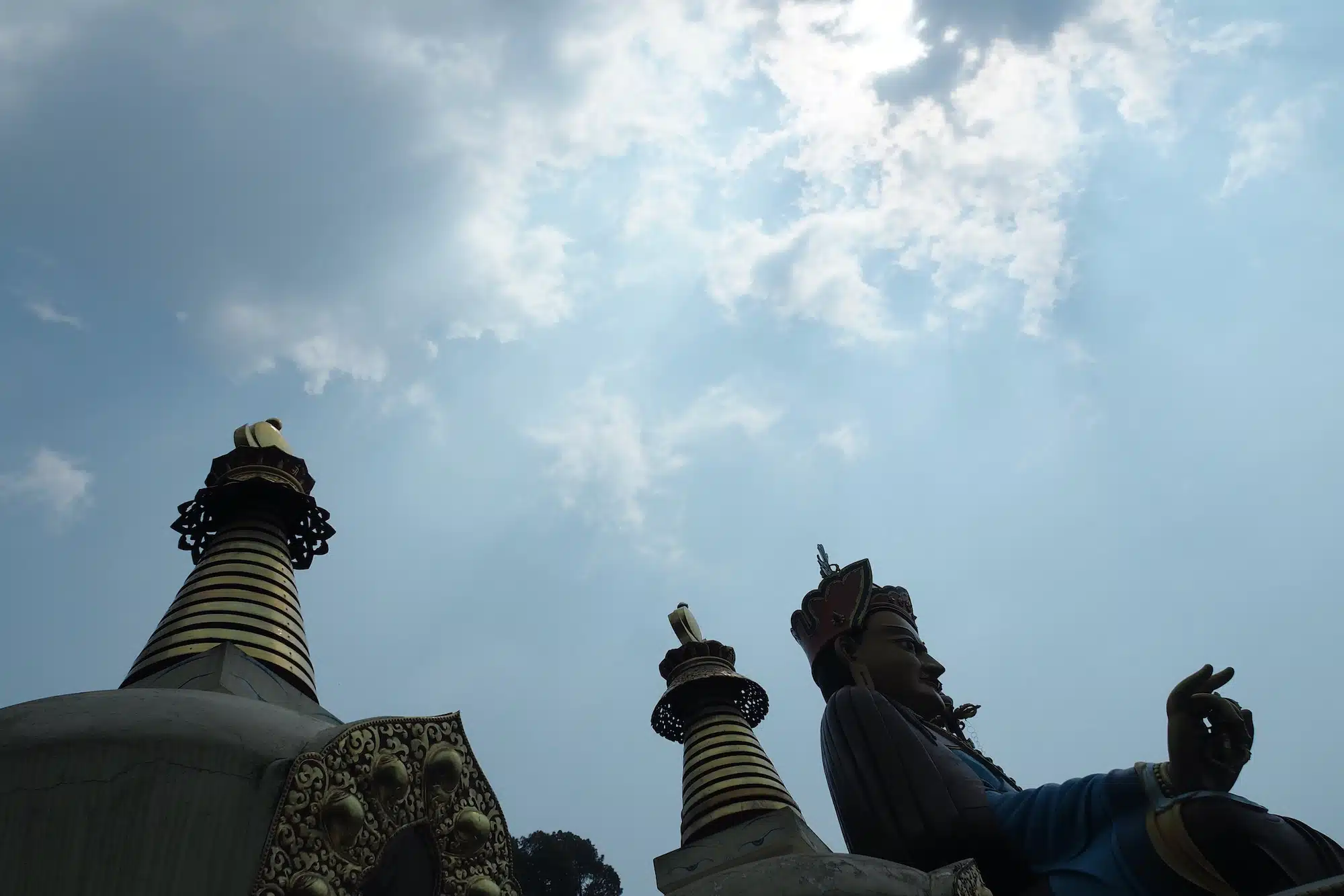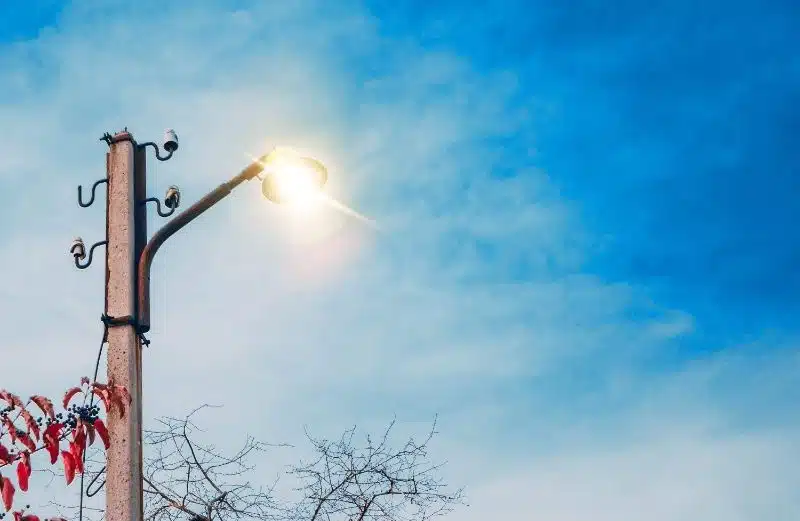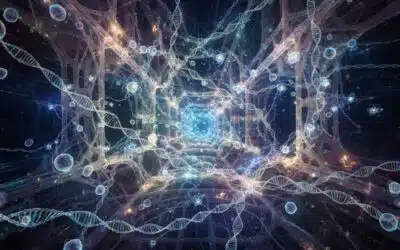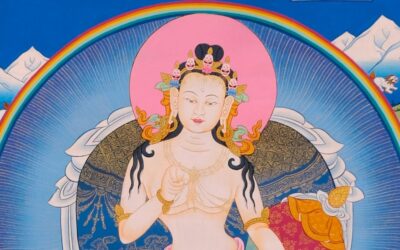The Guru and (or is?) the street lamp

Written By Denis Martin
Blog | Culture and tradition | General Introduction to Dzogchen
In “The Guru and (or is?) the street lamp” Denis questions our often fixed representations of the figure of the master, reminding us that this encounter is essential on the path of Great Perfection.
Serie: The Dzogchen Path
The Guru and (or is?) the street lamp on the path
Preconceived ideas about the figure of the spiritual master are shared both in dedicated places, sometimes ingenuously, and in the local coffee shop with friends who can’t imagine relying on anyone but themselves.
Personally, as a modern “good” spiritual seeker, I generally oscillate between two tendencies. The more passive one, where the Master represents an ideal of wisdom, kindness, and infallible protection, reinforcing the idea of relying on a superior “power”. And, conversely, one imbued with the recent desacralization of spiritual authority figures, which tends to exclude any outside influence from one’s personal and spiritual quest.
How do we deal with such contradictory tendencies if we wish to follow a spiritual path such as Dzogchen, in which the figure of the Master is essential? Especially when the unfamiliar terms such as “guru” or “lama” are used to designate the master. I don’t know… but I am confident that, as the tradition of the Great Perfection teaches us, it is important to constantly question our representations of this figure, and to challenge our experiences with those who have already walked the path…
Referring to the etymology of the Sanskrit word guru, meaning “heavy”, Dilgo Khyentse Rinpoche reminds us that the master is considered to be “heavy with good qualities” and that “just as gold is both heavy and precious, the guru is the heaviest and most precious of all beings because of his inconceivable and flawless qualities” [1]. The term guru, which has remained current in the Dzogchen tradition, has also been translated into Tibetan as lama, meaning “unsurpassable”. Mila Khyentse Rinpoche also explained during a shedra (college of study) that this aspect of heaviness refers to the fact that the master is “loaded with the blessings (of the lineage)”.
“At some point along the way, the Guru can be the street lamp in front of our house that we bump into while falling backwards, and suddenly – in the midst of its powerful luminosity – we find ourselves observing our own nature.”
Although these terms evoke deep respect, the Great Perfection teaches that while many teachers are esteemed for their qualities, the depth of their teachings and their achievements, they will not necessarily represent “the” master on the path we walk. A master is not the Lama per se; he will be the Lama according to the qualities that can be “revealed” and, reciprocally, recognized.
This essential encounter and the resulting relationship will depend on many factors related to our needs, obstacles and past ties. Without this confluence between the blessing, the true source of the Master’s activity, and our authentic aspiration to realize our essential nature, no process of fulfillment will take place.
The different dimensions of the Master, whether it’s the same person or not, will gradually reveal themselves along the way, depending on our level of experience. This will enable us to better realize the nature of our relationship with the Master and the aspirations that will result from it (on this subject, read Paul’s article : The Traditional Qualities of a Disciple.
,The Master can be the teacher who introduces us to the texts and commentaries of the masters of the past. Sometimes he is the guide who clarifies the path, confronts us with our obstacles or who builds up our confidence. When the conditions are favorable, direct, fundamental instructions are transmitted. There’s also the master who restores the view of the fundamental nature (who “repairs samaya“). Finally, there is the master who liberates the mind, enabling to “meet your essential nature in the moment“, and who is known in the Dzogchen tradition as the “Root Lama” (tib. : tsawé lama, rtsa ba’i bla ma).
It’s also important to remember that when a master teaches the Great Perfection, he is primarily transmitting the direct knowledge of the primordial state, that has been experienced and passed down through an entire lineage of transmission.
From a Dzogchen perspective, the term “lama” does not refer exclusively to a human master whose teachings are followed. Its meaning encompasses any “capacity” to transmit the connection to the primordial Nature of our mind. Therefore, the Lama can take any form, as long as it enables the encounter or actualization of this connection.
Thus, as we progress along the path (which usually extends beyond a single lifetime), we come to realize that all the manifestations that appear to us and that we experience through our senses are reflections of the Lama, enabling us to encounter our essential nature at every moment.
At some point along the way, the Guru may be the street lamp in front of our house that we bump into while falling backwards, and suddenly – in the midst of its powerful luminosity – we find ourselves observing our own nature. At that moment, our tendencies, limitations, and fears are released, and trust in the (human) master simply becomes direct trust in primordial nature.
By nurturing and preserving this connection with our essential nature, the Master will then be omnipresent and will remain even when all phenomena disappear and give way to natural liberation, the Great Perfection.
To (re)read – our series on the friend of good
https://dzogchentoday.org/the-friend-of-good-1/
https://dzogchentoday.org/the-friend-of-good-2/
https://dzogchentoday.org/the-friend-of-good-3/
https://dzogchentoday.org/the-friend-of-good-4/
[1] Dilgo Khyentse Rinpoche, The Wish-Fulfilling Jewel. The Practice of Guru Yoga according to the Longchen Nyingthig Tradition. Translated by Könchog Tenzin. Shambala 1988 – 2013 (pp. 33 & 62).od-2/ BACK
More Posts
The ground of all Künshi
This article “The ground of all, Künshi” provide a better understanding of the essential words and concepts of Dzogchen.
The Four Testaments of the Vidyādharas
This article from Grégoire presents the" Four Testaments of the Vidyādharas", essential teachings from the early masters of Dzogchen.
The Story of the First Masters: Garab Dorje
“The Story of the First Masters: Garab Dorje” is the first article in a new category about the masters of the Dzogchen lineage.





